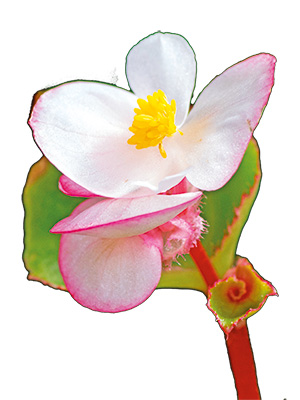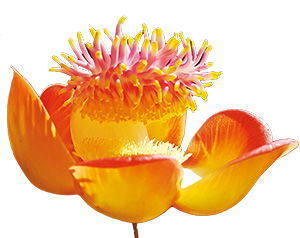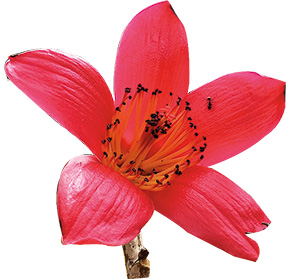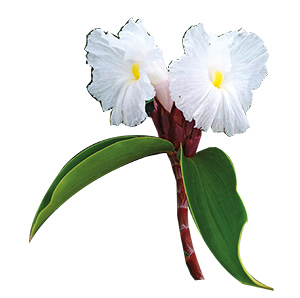
Plant of September
Maha Drona
 Maha Drona, scientifically known as Anisomeles malabarica (L.) R. Br. ex Sims, belongs to the Lamiaceae family, or the mint/basil family. Maha Drona reaches a height of one to two metres. Its stems are four-angled and blunt, white and hairy. Flowers are pink with white streaks or entirely white, up to two cm long.
Maha Drona, scientifically known as Anisomeles malabarica (L.) R. Br. ex Sims, belongs to the Lamiaceae family, or the mint/basil family. Maha Drona reaches a height of one to two metres. Its stems are four-angled and blunt, white and hairy. Flowers are pink with white streaks or entirely white, up to two cm long.
Maha Drona is reportedly one of the best remedies for knee pain. The leaves of the Maha Drona are filled in half a mud pot and gingelly oil is poured into three-fourths of the pot. The mouth of the pot is tied with a cotton cloth and kept in a sunny place for a month. After 30 days the Maha Drona leaves soaked in oil are heated and the warm oil is applied gently on the knees. Maha Drona is a moderate shrub which looks nice in any garden. It can also be placed in containers to flank front doors or patio steps. It attracts tiny birds and butterflies too.
Wild jackfruit
 Wild jackfruit is a relative of the common jackfruit tree that comes under the family Moraceae and is botanically known as Artocarpus hirsutus Lam. Wild jackfruit is a lofty evergreen tree which exudes milky-white, sticky latex when injured. Dense branching and finely textured foliage make this tree a winner as a specimen or a standalone tree. While fruiting, it renders a graceful appearance with cute little jackfruits. Its upright branches and roundish canopy provide expansive shade, making it an awesome avenue and walkways tree and should be the prime choice for city and town planners.
Wild jackfruit is a relative of the common jackfruit tree that comes under the family Moraceae and is botanically known as Artocarpus hirsutus Lam. Wild jackfruit is a lofty evergreen tree which exudes milky-white, sticky latex when injured. Dense branching and finely textured foliage make this tree a winner as a specimen or a standalone tree. While fruiting, it renders a graceful appearance with cute little jackfruits. Its upright branches and roundish canopy provide expansive shade, making it an awesome avenue and walkways tree and should be the prime choice for city and town planners.
Wild jackfruit yields fruit that is primarily medicinal and tastes delicious. Fruits are also reported to be aphrodisiac. The ripe fruit is edible. The tree’s leaf, bark, ripe fruit and latex are used as medicine. Its fresh leaves are fodder for elephants. The fallen leaves make good organic mulching material. The tree’s wood is used for house construction, boat building and furniture.
Begonia
 Begonia malabarica Lam, belonging to its own family Begoniaceae, is a beautiful and sturdy houseplant that can be planted in shaded summer beds since it is not finicky about being outdoors. Unlike other native wild plants it is ideal for indoor environments and can even add colour to bathrooms as this species loves humidity!
Begonia malabarica Lam, belonging to its own family Begoniaceae, is a beautiful and sturdy houseplant that can be planted in shaded summer beds since it is not finicky about being outdoors. Unlike other native wild plants it is ideal for indoor environments and can even add colour to bathrooms as this species loves humidity!
Tuberous begonias will die every year but the wild one doesn’t. It offers attractive, year-round asymmetrical foliage with colourful streaks on dark green leaves and stunning seasonal male and female flowers. Its deep red colour beneath its leaves makes it adored by plant lovers. As an outdoor garden plant, native begonia can be used as a colourful and compact edging for flower beds or to ornament window boxes and fill hanging baskets.
This is the only species with leaves that have all five different tastes. When chewed, its leaves are first sour followed by bitter, sweet, pungent and finally an astringent taste! The leaves are used to treat blood cancer, heart diseases, skin infections, diarrhoea and respiratory complaints.
Kailash Taru
 Sacred trees are usually planted in and around temples or places of pilgrimage. The tree which is planted at the heart of the temple is known as Sthala Vruksha or sacred element. One such sacred tree is Kailash Taru or Nagalinga Pushpa. It is believed that the Kailash Taru has been in India for more than 3,000 years. It is scientifically known as Couroupita guianensis Aubul and belongs to the family Lecythidaceae.
Sacred trees are usually planted in and around temples or places of pilgrimage. The tree which is planted at the heart of the temple is known as Sthala Vruksha or sacred element. One such sacred tree is Kailash Taru or Nagalinga Pushpa. It is believed that the Kailash Taru has been in India for more than 3,000 years. It is scientifically known as Couroupita guianensis Aubul and belongs to the family Lecythidaceae.
This tree is known for its unusual flowers and fruits. The main trunk is ornamented with hundreds of drooping racemes with fragrant flowers which are large, showy, 6-10 cm long, yellowish-red outside and pink inside. The tree’s flowers produce two types of stamens — the fertile ring stamens and the sterile stamens on hood-like structures. In Hindu mythology, the hooded sterile stamens are seen as 100-headed snakes and the style at the centre is seen as a Shivalinga, hence the local name Naga-Lingapushpa. The bark, leaf and flower have medicinal properties and are used for scorpion stings, dysentery, piles, scabies and other skin diseases.
Shalmali
 Shalmali or Bombax malabarica L. is a huge tree with a straight trunk which reaches 25 metres. It is usually found in India’s deciduous forests. Shalmali is a gloriously tall tree, native to India, which flowers abundantly and blooms profusely in summer. It has large, showy, scarlet flowers which appear before its leaves sprout on the branches. Hence, during flowering it is leafless! While in bloom it has a profusion of red lotus flowers adding pizazz to any landscape.
Shalmali or Bombax malabarica L. is a huge tree with a straight trunk which reaches 25 metres. It is usually found in India’s deciduous forests. Shalmali is a gloriously tall tree, native to India, which flowers abundantly and blooms profusely in summer. It has large, showy, scarlet flowers which appear before its leaves sprout on the branches. Hence, during flowering it is leafless! While in bloom it has a profusion of red lotus flowers adding pizazz to any landscape.
Shalmali’s unripe fruit, green in colour, mimic the size and shape of unripe bananas. Its tap root, bark, gum, flowers, fruit, seeds and silk cotton possess medicinal value and are used against dysentery, diarrhoea, piles, cough, menorrhagia and leucorrhoea. The cotton obtained from its fruit capsules is used in pillows to induce better sleep. Shalmali’s common name is red silk cotton tree.
Crepe ginger
 Crepe ginger or Costus speciosus (Koen. ex Retz.) SM., of the family Costaceae, is a member of spiral gingers. It is a shrubby perennial, well-known as an outstanding medicinal plant used in almost all systems of Indian medicine. Its rhizomes are horizontal and creeping. Stems are sub-woody at the base and covered by purplish leaf sheaths. The leaves, around 30 cm long and eight cm broad, are spirally arranged, with velvety soft texture underneath, furry to touch.
Crepe ginger or Costus speciosus (Koen. ex Retz.) SM., of the family Costaceae, is a member of spiral gingers. It is a shrubby perennial, well-known as an outstanding medicinal plant used in almost all systems of Indian medicine. Its rhizomes are horizontal and creeping. Stems are sub-woody at the base and covered by purplish leaf sheaths. The leaves, around 30 cm long and eight cm broad, are spirally arranged, with velvety soft texture underneath, furry to touch.
The crepe ginger is an exciting landscape plant with shining green leaves spiralling on its stalk. It adds beauty to lush green lawns and looks stupendous along water bodies. A water body can be created with crepe ginger islands. This plant is easy to grow and doesn’t attract pests. The rhizomes are used to treat boils, constipation, diarrhoea, headache, giddiness, earaches, leprosy, skin diseases, fever, bronchial complaints, inflammations, intestinal worms and anaemia.
Comments
Currently there are no Comments. Be first to write a comment!



